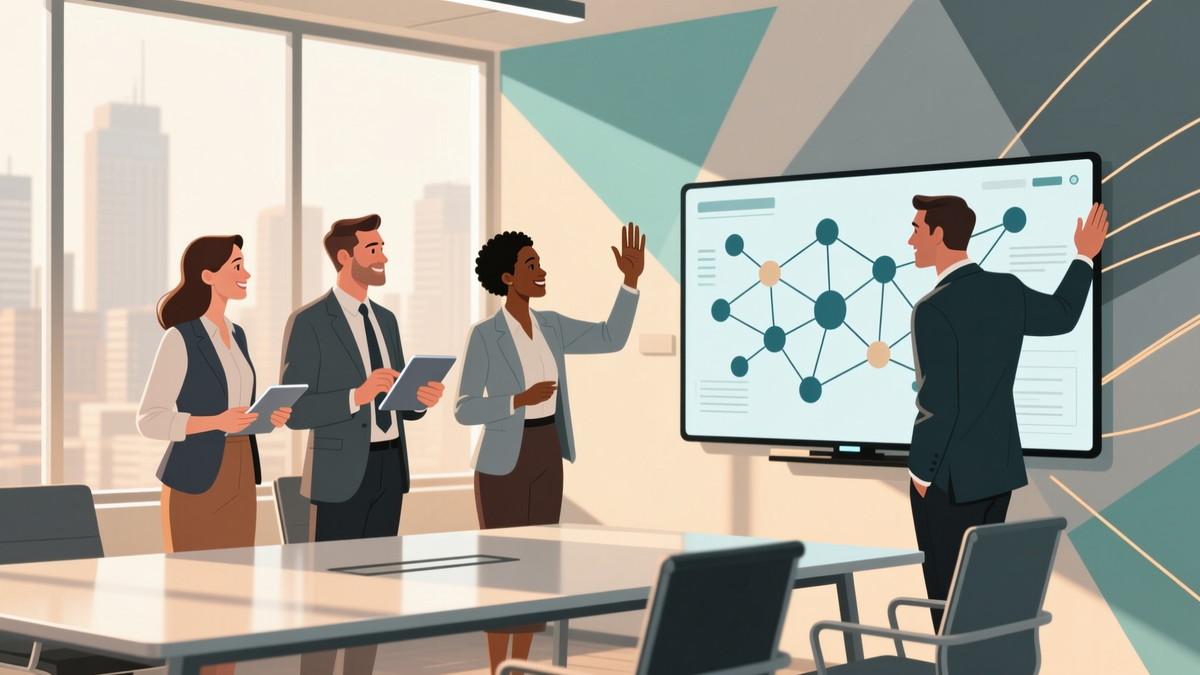
Mastering Teamwork: Educational Games and Activities to Build Stronger Teams
Discover how educational games and team-building activities can transform workplace culture and boost collaboration. Learn practical tips for HR pros and managers.
The Power of Teamwork in the Modern Workplace

In today’s fast-paced work environment, teamwork isn’t just a buzzword—it’s a necessity. Research by Gallup shows that teams with strong collaboration skills are 21% more productive than those lacking cohesion. But how do you cultivate these skills effectively? Enter educational games and team-building activities: dynamic tools that transform abstract concepts into tangible results. This post explores actionable strategies to teach teamwork, boost workplace culture, and drive professional development through engaging learning activities.
[IMAGE_PLACEHOLDER_1]Why Teamwork Skills Matter
Effective teamwork correlates with higher employee engagement, innovation, and problem-solving agility. A Harvard Business Review study found that 75% of employees consider teamwork more motivating than individual work. Yet, building these skills requires intentional practice. Traditional lectures fall short; immersive, play-based learning bridges the gap.
Ice Breaker Games: The Gateway to Collaboration
Ice breakers dissolve barriers and set the stage for trust. These low-stakes activities are ideal for kickstarting workshops or meetings. Let’s dive into two examples:
1. Two Truths and a Lie
- Objective: Encourage communication and active listening.
- How to Play: Each participant shares three statements—two true, one false. Teammates guess the lie.
- Team Learning Takeaway: Highlights the importance of understanding diverse perspectives.
2. Human Knot
- Objective: Foster problem-solving and collaboration.
- How to Play: Stand in a circle, grab two random hands, and untangle the ‘knot’ without releasing hands.
- Team Learning Takeaway: Demonstrates the value of patience and collective effort.
Team Building Activities for Deeper Connection
For sustained skill building, structured team-building exercises are essential. These activities simulate real-world challenges while nurturing trust and creativity.
Case Study: The Escape Room Challenge
A tech startup in Austin, Texas, used a virtual escape room to improve cross-departmental collaboration. Teams had 60 minutes to solve puzzles requiring technical, creative, and strategic input. Post-activity, 89% of participants reported improved understanding of colleagues’ strengths, and project completion times dropped by 15%.
Activity Example: Bridge Building
- Objective: Teach planning, delegation, and resource management.
- Materials: Straws, tape, and a small weight (e.g., a water bottle).
- Task: Build a freestanding bridge that holds the weight. Time limit: 30 minutes.
- Pro Tip: Debrief by discussing roles and decision-making processes.
Professional Development Through Team Learning
Integrating teamwork into professional development ensures skills transfer to daily workflows. Consider these approaches:
1. Role-Playing Scenarios
Simulate workplace conflicts or client pitches. Assign roles like ‘leader,’ ‘note-taker,’ and ‘timekeeper’ to practice adaptability. For example, a marketing team might role-play presenting a campaign to executives, honing both communication and collaboration.
2. Gamified Workshops
Create a points-based system for completing collaborative tasks. For instance, a sales team could earn badges for joint quota achievements. According to a 2022 LinkedIn Workplace Learning Report, gamification boosts engagement by 60%.
Practical Tips for Implementing Teamwork Training
Ready to get started? Follow these actionable steps:
- Align Activities with Goals: Choose games that address specific skills (e.g., communication, trust).
- Encourage Reflection: After each activity, ask, “What worked well? What would you change?”
- Mix Up Teams: Rotate members to break silos and foster empathy across departments.
- Track Progress: Measure improvements in metrics like project turnaround or employee satisfaction scores.
Remember: Consistency is key. A Salesforce study found that companies conducting monthly team-building exercises saw a 34% increase in employee retention.
[IMAGE_PLACEHOLDER_4]Conclusion: Building a Culture of Collaboration
Teaching teamwork isn’t a one-time event—it’s an ongoing investment in your workplace culture. By leveraging educational games, structured activities, and intentional reflection, you’ll cultivate a team that’s not only skilled but also resilient and innovative. Start small, stay consistent, and watch your team thrive.
Last updated: November 16, 2025